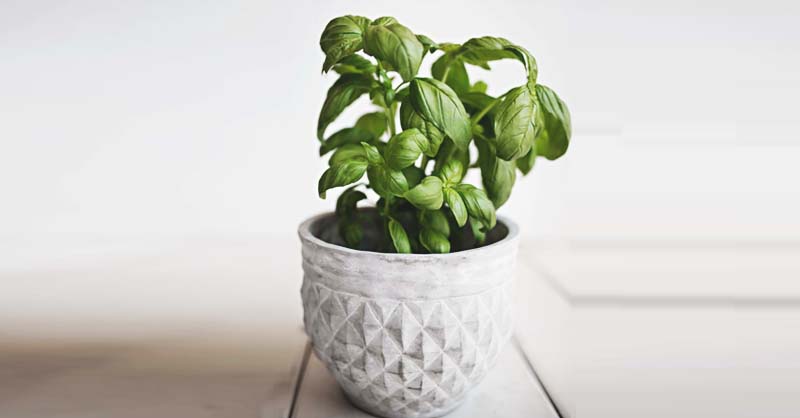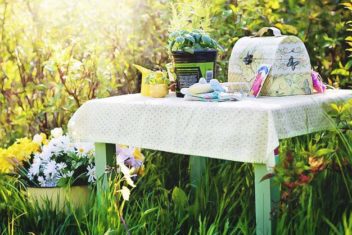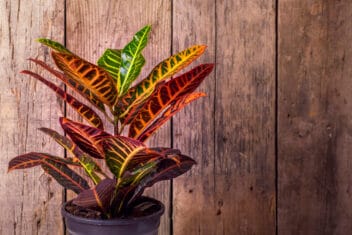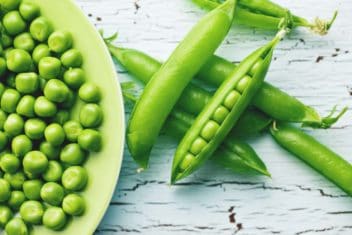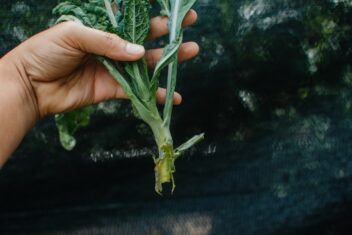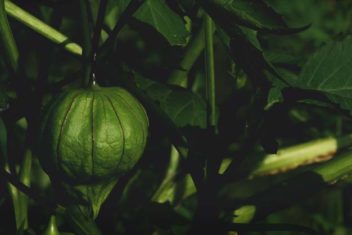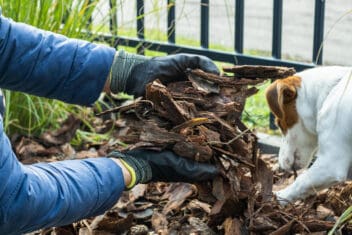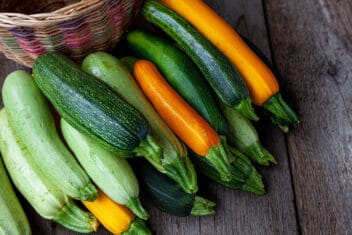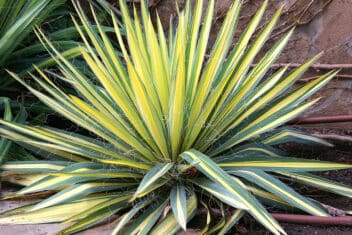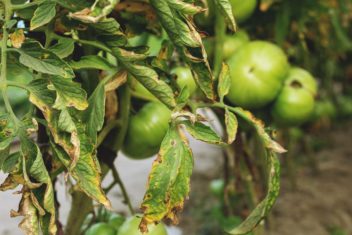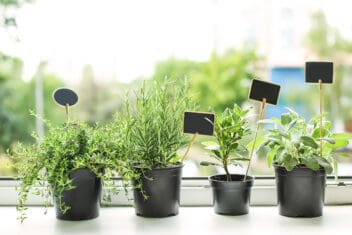Not everyone is lucky enough to have a huge garden or a convenient plant-friendly spot. Growing herbs in pots is a fantastic way to get your hands in the dirt if you don’t have a yard – or even a patio or balcony. That’s because herbs lend themselves perfectly to growing in confined spaces.
Container growing isn’t only for people who lack a yard. Growing herbs in pots can be all about the convenience factor, as well. I’ve grown dozens of herbs in pots even though I have an acre of land. I like to keep my herbs right near my kitchen door so that I can run outside and grab a few sprigs of fresh basil for pasta sauce or mint for some iced tea.
You don’t need to put herbs outside, either. Herbs grow well in pots inside, so long as you have some light for them to enjoy. On my husband’s current to-do list, he’s building me a shelf near our kitchen door so that I can grow herbs year-round. Using containers, you can create an herb garden indoors or out.
Herbs grow well nearly anywhere, and they take a lot less maintenance than some other plants, so they’re ideal if you’re just dabbling in the gardening world or don’t have the time and space to dedicate to a full-sized garden. Let’s take a look at what you need to know about growing herbs in pots.
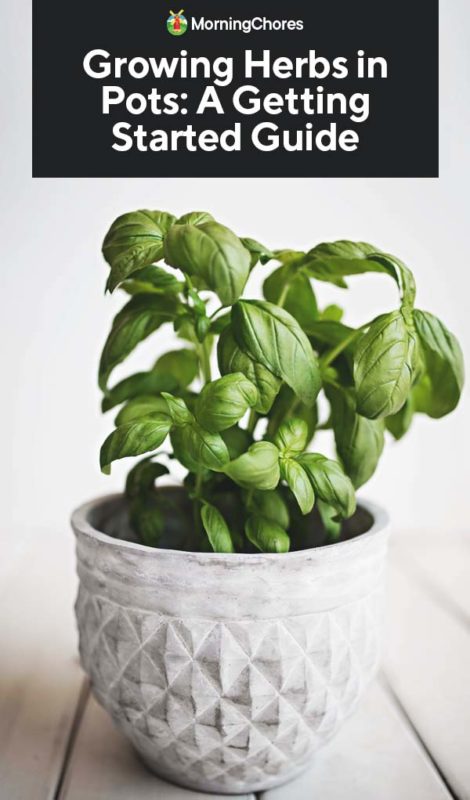
The Benefits of Growing Herbs in Pots
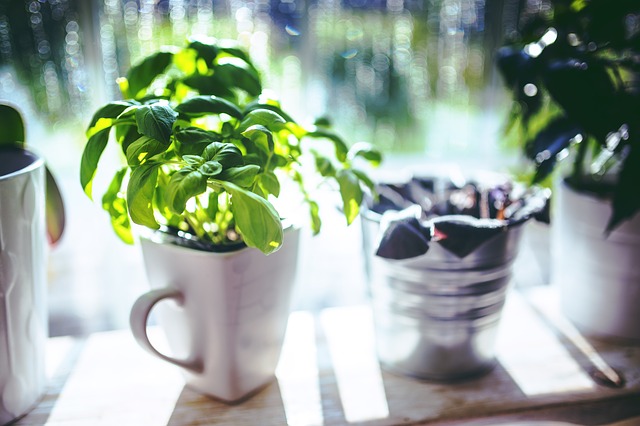
Potted herbs are a favorite of gardeners and chefs because they provide an easily-accessible food source. Not only that, but displays of pots and containers are aesthetically pleasing.
But there are other reasons why you might want to grow herbs in pots. For one, you can conveniently place the herbs wherever you need them, whether that’s on your countertop or outside of your backdoor.
For another, maintenance is much easier when you have containers. Instead of having to weed the entire garden bed, you just have to pluck a few weeds out of the pots now and then. It also makes it easier to battle against pests and diseases.
You don’t need a large spot for container gardening. Pots range in size, and small containers can be placed on tables, shelves, the ground, or wherever you want.
The Best Herbs for Growing in Containers
Herbs are easy to grow in general, but some are more picky about their conditions than others. Some of the easiest herbs for beginners to grow include:
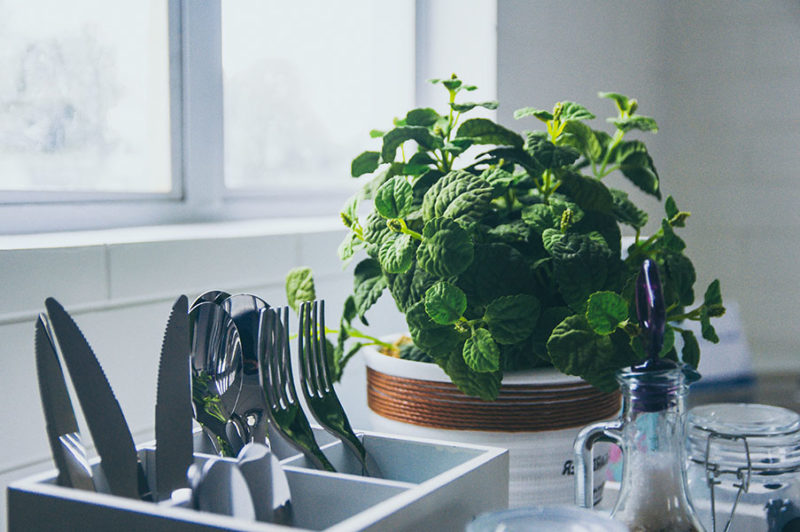
Mint is not only one of the best herbs to grow in pots, but it’s also one that should be grown in containers. I made the mistake of putting mint into my garden bed, and I’ve never been able to get rid of it. Mint has a vigorous growth pattern, so it spreads and overwhelms neighboring plants.
Picking a Container for Your Herbs
You can plant a single herb in one pot or put multiple herbs in a container for a full, English-style garden. Some gardeners like to line their path or walls with separate pots or clusters to create interest.
Whatever you choose, each plant needs around 8” in diameter to grow. Some herbs need 3-5 gallon containers. In general, a 12-inch pot can hold 3-4 plants, and a 15-inch container holds 5-6 plants.
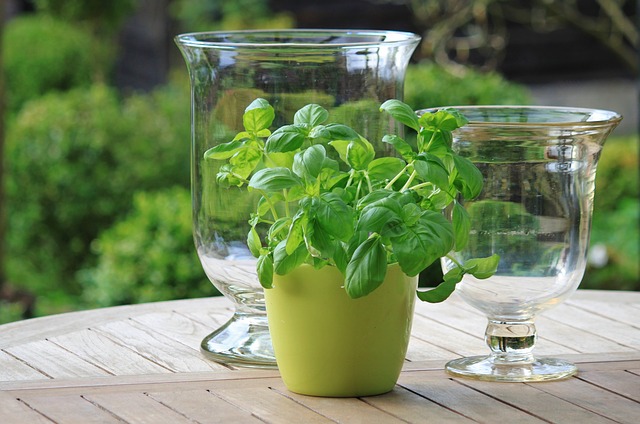
If you’re going to plant more than one herb in each container, you have to match herbs that have the same growing conditions. Drought-tolerant herbs, such as thyme, lavender, and rosemary, need full sun and well-draining potting soil — chives and parsley both like shade. You don’t want herbs together with drastically different needs in the same pot.
You can use any type of container for your herbs, so long as it has proper drainage. Herbs don’t have extensive root systems, so most of the time, you can use smaller containers. That works for herbs that don’t mind drying out between waterings.
The smaller the container, the less soil there is, making it more difficult to accidentally water too much. It makes it easier, however, water too little. Some gardeners prefer to use self-watering containers because they provide a constant level of moisture.
The best thing is that containers can be as conventional or as fun as you want. Herbs that originate from the Mediterranean area look great in terracotta pots and urns. Galvanized tubs look beautiful with luxurious foliage hanging over the sides. You can use wicker-framed planters or single, plastic containers.
How to Grow Herbs in Pots
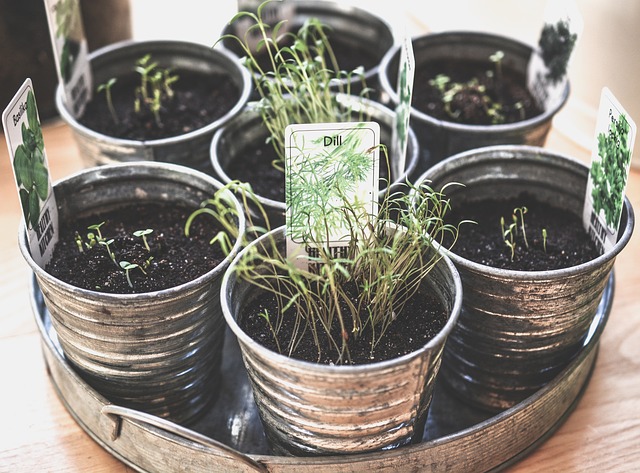
Herbs need the right soil, sunlight, and feedings to thrive, particularly when you’re growing them in pots. Plants need the right conditions, whether they’re in the ground or not. You can buy an herb garden kit to make the process easier; they come in all shapes and sizes. You can also gather the materials yourself.
Pick the Right Location
Most herbs need full sun to grow – at least six hours per day. The great thing about growing herbs in pots is that you can move them around to find the best location for your plants. If the containers get too hot when the temperatures get high, you can move them into the shade during the hottest part of the day. If your plants are struggling in the wind, you can move them to a protected area.
Prepare the Soil
You want to use a high-quality potting soil because potted plants need good drainage and extra nutrition. You’ll also want a medium to lighten the soil, such as perlite. Don’t forget some small stones for the bottom of the herb pots to provide drainage, or you can also use broken ceramic pot pieces.
Planting the Herbs in Pots
Now that you have the location and items, let’s get started.
- Put the stones at the bottom of the pots to help with drainage.
- Combine perlite and potting mix, then add it to the pot. Sand and grit also work as well to increase drainage.
- Put the seeds or seedlings into the pot. If you’re planting multiple herbs per pot, you should arrange the plants on top of the soil to see how they’ll look, first. Creeping or trailing herbs belong in the front of the pots so that the foliage spreads down the containers. Taller herbs grow well in the back or middle of the container, and bushier plants belong in between. Then, dig a hole and put the plants in place. Once planted, press the soil down gently to prevent air pockets.
- Water deeply and put the container in a sunny spot. Thoroughly watering the herbs helps to settle them into position. You might notice the level of potting soil will sink once you’re done the watering, so you might have to add more potting soil.
How to Grow Herbs Inside
If you don’t have space outside, you can grow herbs inside. Kitchen gardeners love the convenience of having pots of herbs close while cooking.
For the most part, growing herbs inside requires the same soil as outdoor ones, but there are a few other differences to consider when growing indoors.
Finding The Best Spot
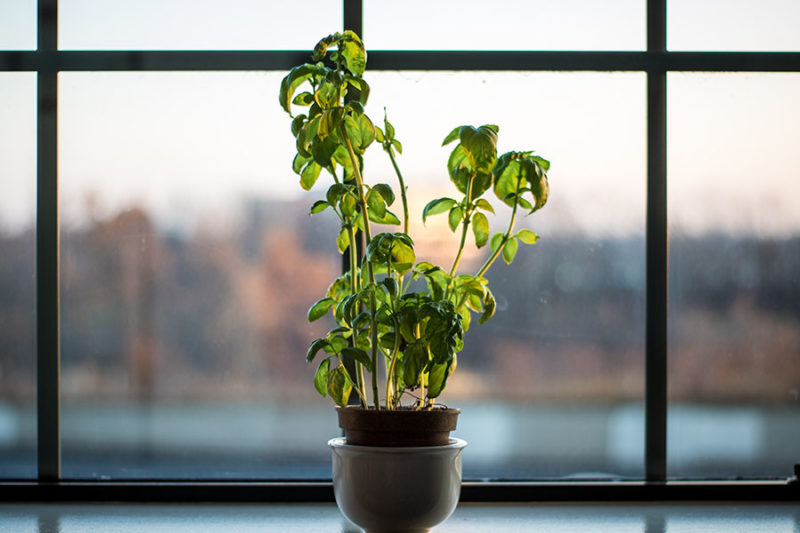
Herbs need as much natural light as possible to grow indoors. They should be placed near a sunny window that faces south and receives at least six hours of sunlight. The light coming through a south-facing window is usually enough for most herbs.
Some herbs that require less light, like mint and parsley, could do well near west or east-facing windows. You’ll know if your herbs aren’t receiving enough sunlight because they’ll experience reduced growth, legginess – which means unusually long stems between leaf sets, smaller than usual leaves, or stems that turn yellow.
If you don’t have windows that provide enough sunlight, you can use a grow light that mimics direct sunlight. Grow lights also help during the winter when there’s less sunlight.
Indoor Temperatures
Indoor herbs prefer the same temperatures as you do – around 65-70℉. Temperatures near windows usually drop 5-10°F, but herbs are generally fine because these conditions mimic the same temperature fluctuations that they experience outside.
Taking Care of Herbs in Pots
Now that you have your herbs planted in pots, you have to take care of them. Turn the plants regularly to make sure they get enough light and don’t start bending to one side.
Watering Herbs

It’s easy to overwater or underwater potted plants. Wait until the top surface of the soil is dry before watering, but don’t let the soil stay dry for too long. Water according to the needs of each of the herbs. Fleshy-leaved herbs, such as basil, need more water, and aromatic herbs with smaller leaves, such as rosemary and thyme, require less water.
Fertilizing Your Herbs
Be careful not to over-fertilize your herbs, because this can cause them to die. It can also change the taste of your greens. Additionally, some herbs thrive on neglect, such as thyme and oregano.
You should apply a time-based fertilizer when planting. Well-rotted manure or compost work as well as a fertilizer, but you can side dress the plant later with compost if you forget. Seaweed fertilizer is mild and has a low NPK ratio.
During the growing season, you can water the herbs with an organic liquid fertilizer every few weeks. That helps produce plenty of leaves, so you’ll have an abundant harvest.
Give It a Shot
Herbs are the spice of life – literally. They give your favorite dishes flavor; no kitchen is the same without herbs. Freshly grown herbs are even more delicious, and growing herbs in pots mean that everyone can have fresh herbs no matter how much growing space they have. Give it a shot today.

